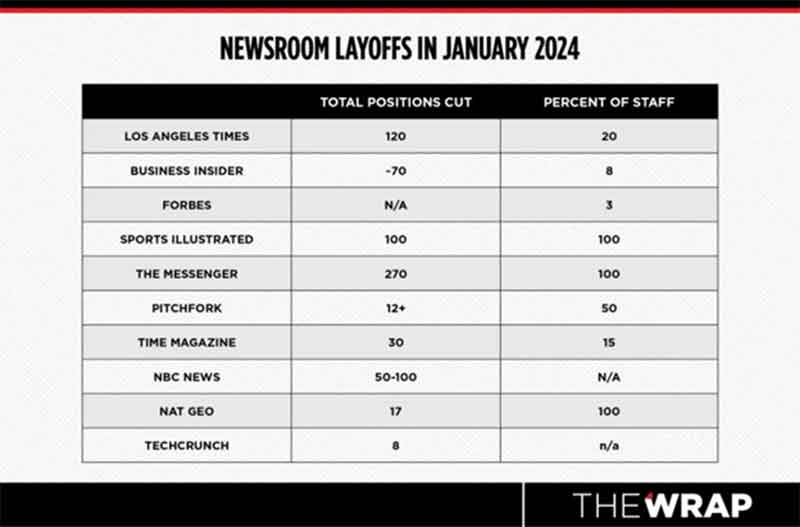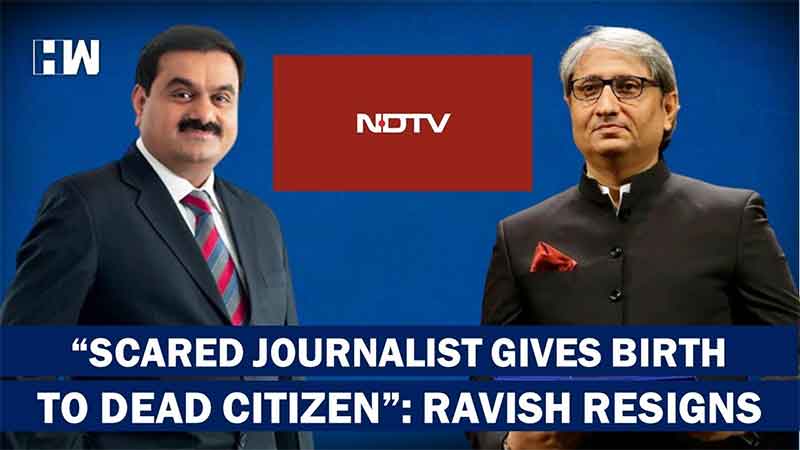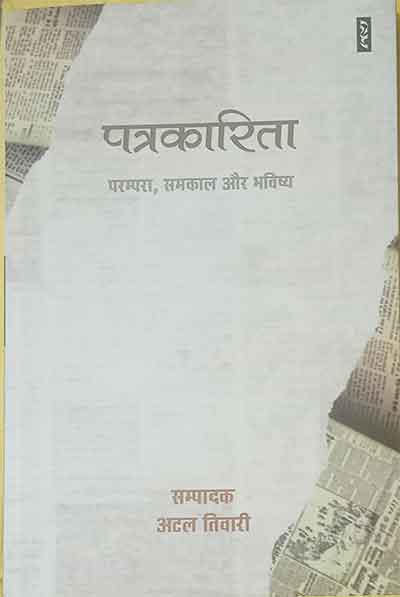
As one might have expected, the already severe problems of Churnalism have become even worse with the arrival of news’ websites demanding ever faster output. Churnalism is a form of journalism based on corporate press releases and pre-fabricated stories provided by external news agencies.
Churnalism uses pre-packaged materials instead of reporting news and it is done for fast output. It is the blending of two things: a) churn (churning out) and b) journalism. It is generally done to reduce costs by recycling original news generated by others and without checking sources. Churnalism has made its appearance to counter lost corporate profits and revenue because of the rise of Internet and the decline in advertising revenue.
All this also means that churnalists adjust their writing style to a robot-like style so that, for example, every headline has between 31 and 33 characters to fit the specifics of the all-important online publishing. In fact, robots can – and do – write entire newspaper articles mostly for sport and finance.
Yet, such semi-journalistic and AI-supported robotic writing is policed by a robot computer program which automatically lights up the headline in red or changes the typeface of the story to a smaller font. The churnalist becomes a mere appendage to the computerized mega-machine. As such, work in journalism has become like work in a car factory with an assembly line producing articles, reports, and news items. Simply put, it is like churning out news in mass news manufacturing.
Of course, Churnalism impacts on work. Churnalists are severely overstretched while working (on average) up to five hours of unpaid overtime every day. One journalist said, I got the job because I was young and cheap. And the guy who replaces me will no doubt be even younger and even cheaper. These are the realities of the neoliberal workplace.
Today, specialist sports or finance reporters can remain stationary in their office. They can do their job miles away from the nearest sports field or boardroom. And, they can still churn out 4-5 stories per day. This is possible thanks to the work of corporate PR and sports PR. Many of these sports clubs have long become profit-making mini-corporations.
Under Churnalism, PR – formerly known as propaganda – inserts their corporate material into TV news and newspaper. To some extent, corporate PR choose what becomes news. Most importantly, this means suppressing or even eliminating stories that might embarrass corporate advertising clients. This has become systematic in recent years, if not decades. In general, for every story fed to the media, there is one being carefully kept out. Here is a rather common example:
Once, a Prime Minister (PM) commissioned the Social Exclusion Unit (SEU) to investigate the best way to cut crime; the SEU produced a report expecting the government’s response. But the government had problems with the report that provided strong evidence showing that its hardline approach was counter-productive. The government didn’t want the response to be reported. It simply stalled for two long years. The SEU report slipped off the media radar. Second, it waited until one Monday when the PM made a major speech, blaming crime on “the 1960s liberals”. The text of the speech was provided to political correspondents, who ran it on the Monday morning. On that day, TV and radio covered the PM’s speech. The government announced a series of hardline actions while the government PR officers supplied briefings. All this generated substantial news coverage. The PM’s speech was still being discussed six days later. The SEU report appeared on the Home Office’s website. It received not one single word of coverage.
This is by no means an unusual case. Worse, once something like this is published by one media outlet – others are set to follow. Many media corporations spend a considerable amount of time monitoring, repeating, and even copying each other’s output. As a consequence, news tends to cluster around the same selection of stories. It is a kind of mutually reinforcing each other’s propaganda.
Often, ready-to-use news items are offered to them by corporate PR. This occurs mostly through the infamous corporate press release. In some cases, this is written up like proper newspaper articles. Devastatingly, almost all media outlets tend to cover the same subjects using similar press releases or stories brought from wire services like Reuters and Associated Press.
Add the concentration of media ownership and you begin to think, do I live in North Korea? In evil North Korea, it is the pathology of a dictator to have only one news agency. In wonderful capitalism, it is the pathology of a handful of (actually 6) news corporations that – more or less – define what we see, read, and hear.
Once, the Columbia Journalism Review puts an edition of The Wall Street Journal under the microscope. It found that more than half of the news stories were based solely on press releases. Of course, this not only applied to news from inside the USA but also when churnalists covered international news. Churnalism, cost cutting, and corporate management’s relentless drive for profits also mean that foreign correspondents experienced a shattering decline. And, this has led to a severe reduction of international news.
One international correspondent said that he had to do his report in front of a camera outside the Central Mosque at London’s Regent’s Park because at least that looks as though he had travelled somewhere. Meanwhile, and this comes despite its name – US News and World Report – the paper has closed all its foreign offices.
Instead of having their own overseas journalists, global media networks rely on freelancers and wire services (Reuters, etc.). This creates a sterilized and artificial version of world affairs. Strangely, the vacuum of global information comes in the Age of Globalization – an age in which we know less and less about the globe. What we get presented largely with are stereotypes, clichés, and preconceptions supplied to newspapers and TV channels by the two global semi-monopolists’ wire services: Associated Press (AP) and Reuters.
Their news reports are consumed by millions around the world. Back in North Korea, there is only one news agency for international news. Luckily, under capitalism, we have two or three news agencies reporting virtually the same thing. In other words, TV and newspapers more or less recycle what these two dominating wire services deliver.
Historically, it was Reuters and AP that gave us the Y2K-myth (the millennium bug) and worse, they also helped with the engineering of Iraq’s non-existing weapons of mass destruction. The former was silly nonsense; the latter killed a massive number of people – perhaps for oil, as an American bumper sticker once said, kick their ass – get their gas! Despite the Y2K-&-WMD falsehoods, one might like to realize that Reuters and AP report only a tiny fragment of the world around us.
Worse, on Internet news sites, this tiny reporting is further falsified through the use of algorithms – weapons of math destruction – pushing the most obscene and outrageous and often most nonsensical news item to the top. All of this creates the Global Village Idiot. BoJo, Scomo, Trump, Modi, etc. and are by no means – the only – Global Village Idiots. Beyond all that, Churnalism suffers from, at least, three structural pathologies which impact negatively on news consumers:
- firstly, there is an arbitrary selection of subjects. This distorts reality by systemic omission;
- secondly, there are rafts of factual claims which are – at best – unreliable and – at worse – false;
- thirdly, there is a steady infiltration on corporate consensus (read: ideology) reflecting the business values of the corporation that owns the media outlet.
All of this operates under the three imperatives of corporate commerce: a) to cut the costs of news production (churning out news, reports, and articles fast and cost effectively); b) to increase the flow of advertising revenue; and c) to attract ever more readers, Internet users, and views (bums on seats, click baits, etc.).
This leads to three outcomes for Churnalism: run cheap stories; select stories which are quick to cover; and publish what is safe to publish, i.e. what everybody else publishes and what comes from “official” sources adhering to the journalistic default position of, the official line is safe.
Churnalists believe, stick to that and you might not be sued. In many countries, medical doctors, police officers, and certain corporations have consistently deterred news coverage of their malpractices by suing news outlets. Their professional bodies have a long history of funding libel actions against media companies.
The conservative Parents Television Council, for example, has orchestrated venomous campaigns against media outlets that do not accept their conservative Christian values. Yet, in Flat Earth News, Nick Davies writes,
the most potent electric fence in the world is the one erected on behalf of the Israeli government. Journalists who write stories which offend the politics of the Israeli lobby are subjected to a campaign of formal complaints and pressure on their editors; most of all, they are inundated with letters and emails which can be extravagant in their hostility.
Corporate and other lobbying can – and indeed do – install fear into journalists. One journalist noted, corporate lobby can insinuate a feeling of fear among journalists. If your editor knows that a news item will make the phone ring off the hook, the editor may think twice about running it. Sure, corporate lobbying almost always works. I remember numerous examples where I have felt the brunt of it.
Lastly, what turns journalism even more into Churnalism is the rather common hallucination of having to have a balance. The implicit and explicit Golden Rule of journalism (read: the one with the gold rules) is: always give both sides of the story. This is journalism’s ultimate safety net rule.
The ideology of “balance” generally means that journalists never need to say, I am sorry because they have covered both sides. Ultimately, it can mean that journalists are so balanced that they will say anything. Worse, the ideology of balance can be rather senseless or ever outright dangerous. The fact that the earth is round cannot be balanced with the absurdity that the earth maybe flat. Similarly, Covid-19 vaccination cannot be balanced by presenting the un- if not anti-scientific absurdities of anti-vaxxers, etc.
An even worse case is global warming. Earth and climate scientists have spent decades of warning us that the planet is heating up – the scientific evidence is conclusive. Yet, journalists still simply balance what science says with the denialism of oil companies and adjacent lobbying organizations. This isn’t new.
In the case of the 100 million tobacco deaths, scientists tried to warn that smoking was linked to lung cancer. Yet, journalists simply balanced scientific evidence with the falsehoods and counterclaims of the tobacco industry and its lobbyists.
The origins of the idea of presenting a balanced view in journalism lies in the journalists’ perception to show an even-handed and unbiased view, i.e. not favoring any side – for example, not to favor Republicans or Democrats, capital or labor, The Ukraine or Russia, and so on. Yet, many have become cowards buckling to the force of a balanced compromise. The pretense of balanced reporting is further cranked up by a collapse in editorial judgment engineered under the massive pressure of profit-making.
This leads to three things in journalism: less information, more entertainment, and even more corporate PR. It is no surprise when editors say, we are aiming to have six sex stories a week. In an ideal world, we should have a cabinet minister’s sex affair story. Sex and scandal at the highest level of society always sells well. Perhaps one of the key statements on much of this comes from the former controller of editorial policy at the BBC – John Wilson – who once said,
news is a way of making money,
just as selling bread is a way of making money.
No one believes that news and journalism
are simply a service to democracy.
Thomas Klikauer has published a book on Media Capitalism. My thank you goes to my highly dedicated proof reader Meg Young.















































